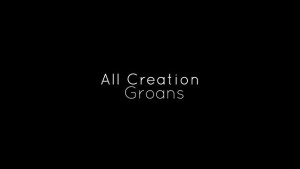Cosmic redemption (Reading Ask the Beasts, pages 222-227)
The New Testament emphasizes Christ’s powerful healing for human beings. As we have seen, this good news was never intended to exclude the rest of creation; but after Anselm’s satisfaction theory took hold in the 11th century, theologians made far fewer references to the world and its non-human species.
Anselm crafted his theory to spell out God’s mercy, but over time it was interpreted to say that God’s anger could only be satisfied by Christ’s sacrifice.
In this interpretation, neither the ministry of Jesus nor the resurrection played a significant role. Obviously, too, the natural world was not in the picture.
In the mid-20th century, many theologians started to explore other ideas of redemption. Today there are many ways for Christians to understand salvation beyond the traditional metaphors of atonement, satisfaction, and sacrifice:
liberation… being freed from slavery… victory over the powers…
healing… reconciliation… justification…
adoption … new birth…
living in peace… fullness of life…
Where do these fresh interpretations come from?
New Testament texts about cosmic redemption: Romans 8:18-25; Colossians 1:15-20; Ephesians 1:10; Revelation 5:13 and 21:5.
Eastern theologians have always had a more cosmic scope. In dialogue with this tradition, western theology is now beginning to do justice to the redemption of the whole biophysical world.
The Franciscan Duns Scotus (13th c) maintained that the incarnation would have taken place whether human beings sinned or not. Why? God is unfathomable love.
Love always seeks union with the beloved; this union occurs in Jesus’ incarnation.
The incarnation was Love’s intent from the beginning, not a response to human sin.
The redeeming power of the cross is not in the satisfaction rendered to an angry God, but in the presence of divine love in the flesh.
This divine love is in solidarity with all who suffer and die.
Karl Rahner (20th c) rejected the still-popular idea that Jesus’ death changed God’s attitude from anger to forgiveness.
God is always merciful: “It is not Christ’s action which causes God’s will to forgiveness, but vice versa.” (Rahner, Christology Within an Evolutionary View and Easter: A Faith that Loves the Earth)
Then what is the meaning of Jesus’ cross and resurrection?
The cross makes God’s love graphically present in the world’s history.
Easter proclaims that the living God is the future of the world.
When Jesus died, his soul did not free itself from the material world.
In the resurrection, God brought his body to life again in transfigured glory.
Muir’s bear (Reading Ask the Beasts, pages 228-234)
Hiking through Yosemite, John Muir came upon a dead bear lying in the forest. Writing later in his journal, Muir bitterly complained about religious folk who believe only humans go to heaven:
“Not content with taking all of earth, they also claim the celestial country as the only ones who possess the kinds of souls for which that imponderable empire was planned.” These magnificent creatures, however, are expressions of God’s power “inseparably companioned by love.” They are made of the same dust as we, and breathe the same winds and drink of the same waters. A bear’s days are warmed by the same sun, and his life, pulsing with a heart like ours, was poured from the same First Fountain. With our stingy spirit we may want to block this creature from heaven. To the contrary, Muir said, “God’s charity is big enough for bears.” (Muir, Thoughts on Finding a Dead Yosemite Bear)
Despite scriptural affirmation of cosmic redemption, most Christian theologians have limited the redeemed cosmos to human beings.
A minority thought all living beings are included in the world’s final transfiguration.
However, most focused on humanity’s need for redemption to such a degree that asymmetry crept in: God creates all things but will not necessarily save all things. Created by almighty God, who pronounces them good, they come and go, and ultimately pass into nothingness.
What do some contemporary theologians say?
Holmes Rolston proposes that nature is continually redeemed, but this need not involve new life for individual creatures. The death of some creatures provides nutrients for others to live; the extinction of species provides living space for new forms of life. The way of nature is the way of the cross, in which life comes from death.(Rolson, Science and Religion)
Christopher Southgate responds that Rolston’s view stops the meaning of redemption too soon. The new generation of another creature is not enough to make things work out all right, especially in the face of the scope of suffering over millennia. (Southgate, The Groaning of Creation)
Elizabeth Johnson argues that if God loves the whole, that means that God loves every part of it. Hence to save the whole world means to save every individual, every bear. Johnson reasons as follows:
The living God creates and cares for all creatures;
This love encompasses all creatures, even in their suffering and dying;
The Word of God joined the flesh of the world through incarnation;
Jesus’ death and resurrection offers hope of redemption for all flesh;
The presence of the Spirit is also the power of resurrected life for all beings;
God’s charity is indeed broad enough for bears.
Summarizing chapters 5-8 (See Ask the Beasts, p. 235)
In dialogue with Darwin’s Origin of Species, chapters 5-8 have given religious meaning to the evolving world:
The living world is the dwelling place of God, continuously brought into being by the Giver of life.
This world is dependent on the Creator, but operates freely in its own evolution.
In solidarity with Christ, it is a groaning, cruciform world but destined for resurrection.
The liberating presence of the Spirit – and the life, death, and resurrection of Jesus Christ – demonstrate the intimate nearness of God to the natural world.
The world is heading toward its final fulfillment thanks to the fidelity of God.
The final chapters of Ask the Beasts bring the human species into the evolving world. Human beings have evolved with consciousness – and therefore must take spiritual and moral responsibility for their actions in the world.





